Mobile apps are quickly becoming just as popular as websites. They have opened up another monetizing avenue through advertising, with the challenge being getting as many users as possible to use the app. You may select any type of advertising method that is suitable for your business whether on a mobile app or your website.
Compared to traditional media ads, there are various novel ways to promote a mobile app product in the digital marketing world. Advertisers now have more chances to track the actions of prospective customers and a larger variety of commercial online messages. There’s a variable pay structure for different types of ads.
Digital marketers utilize various models to structure the compensation for advertisement. A good rule of thumb is that you can buy advertising based on common patterns such as: CPC (cost per click), CPA (cost per action), and CPM (cost per mille).
CPM marketing digital models are frequently served through ad networks such as Value Click Media, Casale Media, Right Media, and Tribal Fusion.
We will discuss CPM and what it means when you pay a network to show such an advert, how it works, and the pros and cons.
The CPM Digital Marketing Concept – What is CPM Digital Marketing?
CPM or “cost per mile” is also known as “cost per thousand”, both terms are used interchangeably. It is an advertising model that bases the cost that companies pay to advertisers for each ad that is charged per 1,000 impressions otherwise known as displays.
What do impressions or displays mean? The terms refer to how many times your ad is shown to your readers. Thus, CPM is the marketing terminology used to describe the price of 1,000 advertising displays on one single webpage.
For example, if the publisher of a website or mobile app charges $3.00 CPM, this can be understood as a way that a digital advertiser will pay $3.00 for every 1,000 views, displays, or impressions of their ad on a specific website or mobile app.
Oftentimes, advertisers calculate the success of a CPM marketing campaign with the assistance of the “click-through” rate. The “click-through rate” is a percentage of viewers who have seen your ads on the websites or mobile apps you’ve chosen, and have also clicked on your ads. Here is a visual explanation of the formula used to calculate click-through rates:
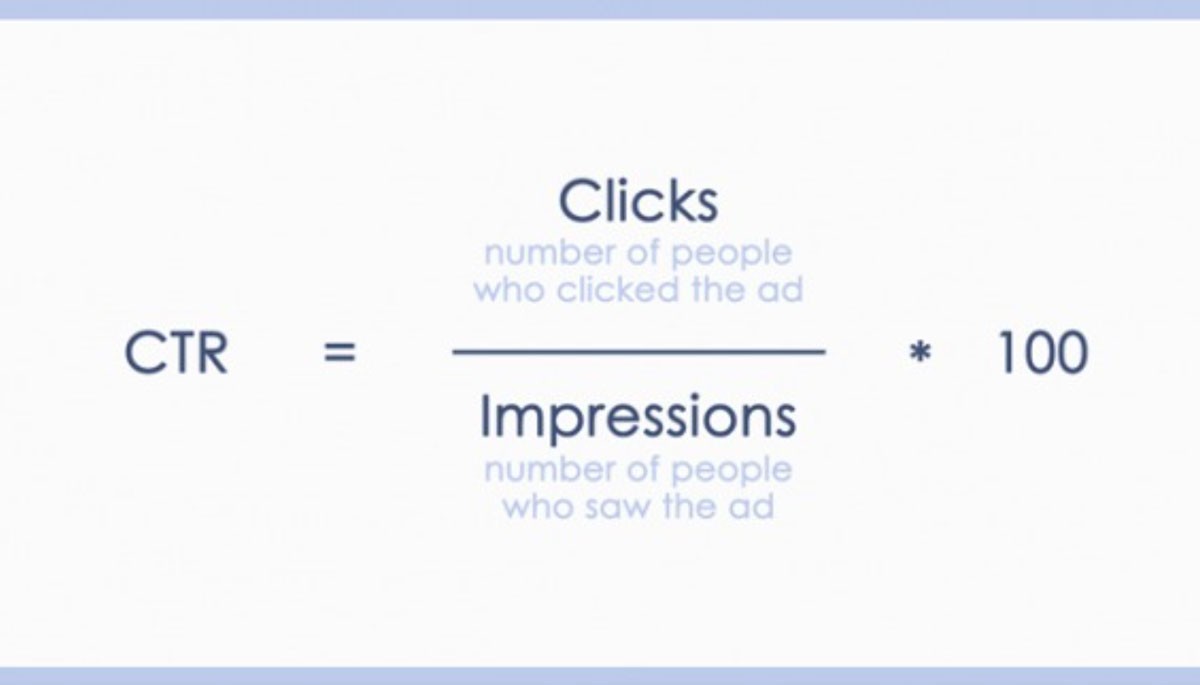
(Image Credit: CXL.com)
This means that an ad that gets three clicks for every 100 displays will have a 3% “click-through-rate” or CTR.
You have to note, however, that you must not measure the success of an ad only by its “click-through-rate” because revenue can be impacted when the audience views the ad but doesn’t click on it.
Review of Online Marketing CPM Terminology
Some key takeaways you should be aware of after reading this article so that you know exactly how to navigate CPM in online marketing and fully understand what is CPM digital marketing are as follows:
- Cost per thousand (CPM) is used in digital marketing terminology to indicate the cost that an advertiser will pay per one thousand views, impressions, or displays that the ad gets on a particular website or mobile app.
- A display, impression, or view is a metric designed to count the number of viewer engagements or views an ad receives.
- CPM is only one of the various strategies used to price digital ads online. The other models include CPC (cost per click), and CPA (cost per acquisition).
Page Views vs. Displays
It is likely that the number of page visitors to a website or mobile ad that features the ad is different from the number of ad displays/impressions/views. For instance, an ad may acquire placement in two different locations of a site.
One could be a horizontal ad banner displayed across the bottom of the home page. Another could be a vertical side banner displayed alongside the text of one of the site’s pages. In the example mentioned above, the advertiser will pay for two displays per page view. For example:
You Might Also Like
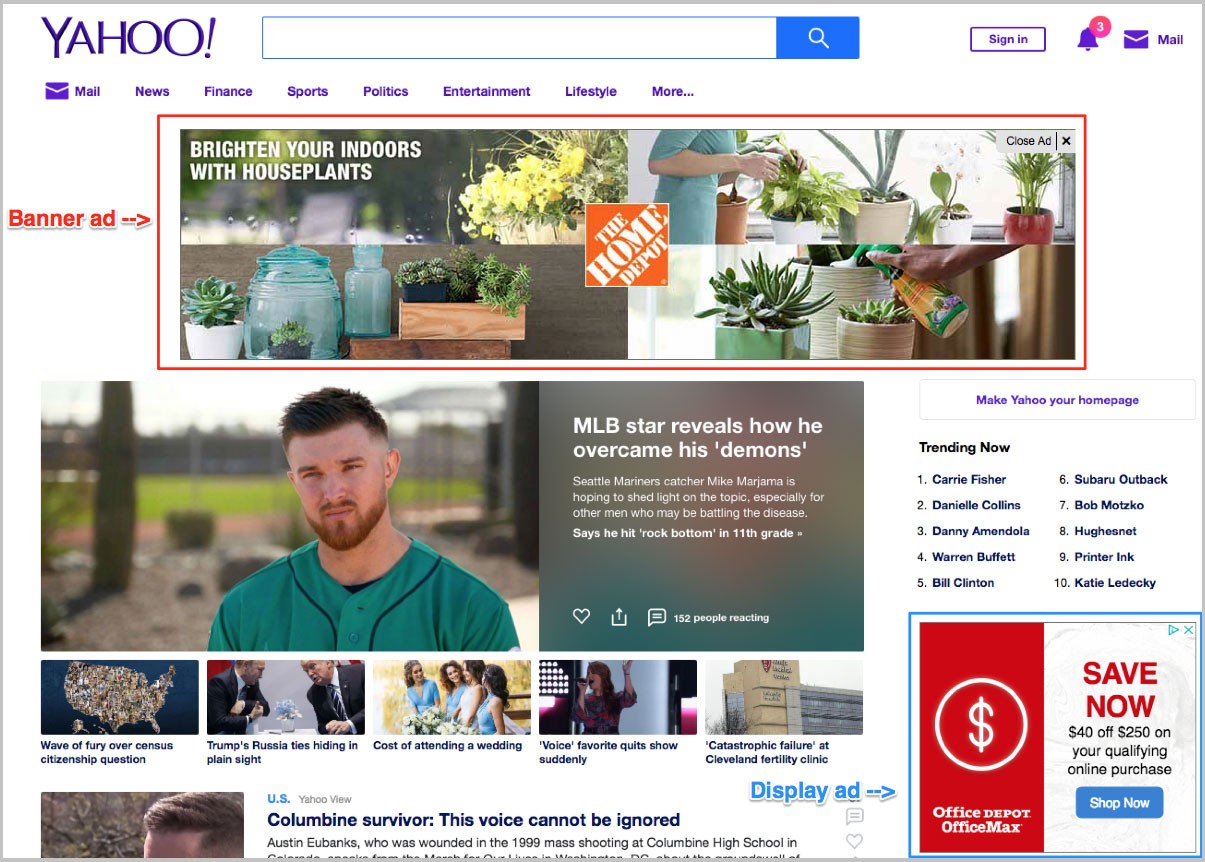
(Image Credit: HubSpot Blog)
Improve your content marketing + SEO in 60 seconds!
Diib uses the power of big data to help you quickly and easily increase your traffic and rankings. We’ll even let you know if you already deserve to rank higher for certain keywords.
- Easy-to-use automated SEO tool
- Get new content ideas and review existing content
- Checks for content localization
- SEO optimized content
- Built-in benchmarking and competitor analysis
- Over 500,000k global members
Used by over 500k companies and organizations:
Syncs with 
Criticism CPM in Online Marketing Frequently Receives
In the digital marketing industry, CPM often receives criticism because of its inability to accurately measure views or impressions. Digital advertisers are left wondering if they are being charged a fair price.
One of the main issues that arise is the duplicate views that are likely to occur from the same person viewing the site. Another consideration is the visits by Internet bots otherwise known as Internet robots, that view the site and alter the total number of views that are counted.
In addition, if a piece of advertisement loads incompletely or fails to load at all, then these ads should not be counted as displays because page visitors won’t be able to see them.
There are cases of advertising fraud when a criminal site publisher utilizes automated scripts to generate traffic to a site for the sole reason of making the number of views seem bigger than they actually are.
Pros and Cons of CPM for the Digital Advertiser
Below, we’ll discuss the various advantages and disadvantages that advertisers face when using a CPM method.
PROS
- Inexpensive:
Compared to other advertising models, CPM is a fairly cheap way to have a presence. CPM advertising is not that expensive depending on the marketing goals. At times, an advertiser only wants to create a bigger online presence. In this case, CPM is a great way to get the word out without cutting too much into your advertising budget.
However, it is only to get views, not for actions to be taken on the ad. This means that you don’t mind having views without clicks. It works for some business purposes, it all depends on the strategy you need to implement as an advertiser at that moment.
- Brand Awareness:
CPM is very useful for successfully building brand awareness among new and prospective clients. It offers a cheap way to engage in promoting your brand. When your brand, logo, or product is displayed on a high-traffic site, it leaves an imprint in the viewers’ minds.
Even if ads are simply displayed without necessarily requiring a specific action from the viewer, it is dollars well spent. Building brand awareness is a key component of successful marketing campaigns that require a specific action from consumers later on. Customers are more likely to take action on a brand they regularly see.
- Number of Impressions Guaranteed:
This model guarantees to deliver to advertisers a certain amount of impressions especially targeted to your niche audience. When you advertise on a site that you know is full of your target demographic, CPM is a great way to know the amount in which your audience saw your ad. you’ll know exactly how many visitors from that site were exposed to your message.
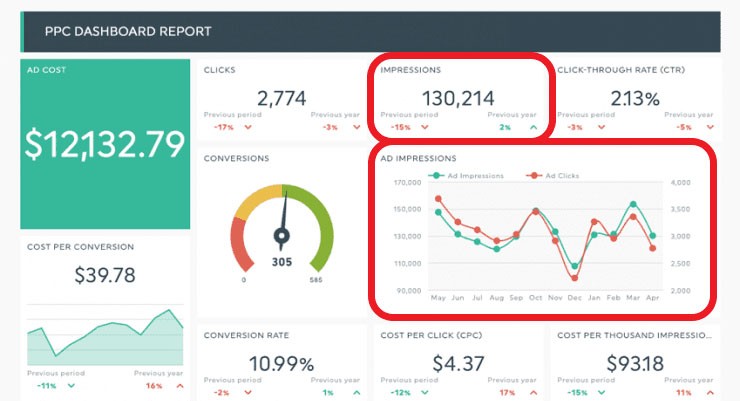
(Image Credit: ReferralCandy)
Getting accurate metrics is an important part of your marketing efforts so that you can tweak your strategy as needed. The important part is to know that these impressions actually come from different viewers, not from Internet robots, or the same page visitors seeing the ads multiple times. The digital advertising industry is working steadily to find a solution to inaccurate metrics.
CONS
- Quality of Traffic is Unknown:
One of the most significant disadvantages of using CPM is that the quality of the traffic cannot be guaranteed. This makes it hard to determine if the displays are worth it or not. Although it could be a high-traffic website, it does not guarantee quality traffic.
As mentioned earlier, it is important to know that the views come from fresh visitors and not from Internet robots or multiple views from the same visitor. It is very different to advertise with a cost-per-click model because you know people are engaging with your ad. Instead, CPM sometimes leaves advertisers wondering where their marketing dollars are truly going. This is what tracking your traffic looks like on Google Analytics:
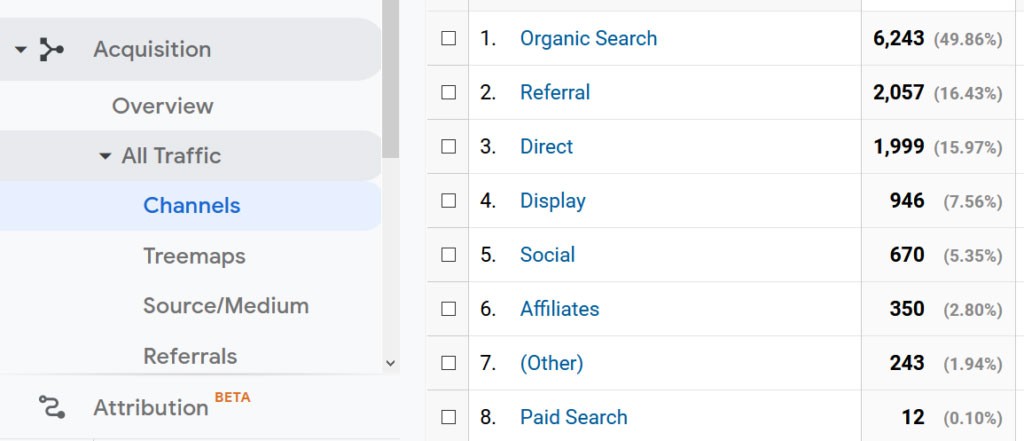
(Image Credit: MonsterInsights)
- Fraud and Inaccurate Statistics:
With CPM, a high risk of fraud impression or the case where your advertisement is displayed various times, but to the same person. You end up being charged the same, and it’s hard to know how many displays are seen by new traffic.
This makes your statistics inaccurate as you measure your results. Having accurate metrics is a key component of advertising efforts. Technology is being developed to improve this part of the CPM model.
- Cannot Measure Actions or Clicks:
Because the statistics may have inaccurate readings, the advertiser may not be able to determine how many “action takers” there are or how many are clicking on a specific advertisement.
This could be okay for some advertising strategies that are only looking to promote their brand, however, if the ad has a “call to action”, then CPM is probably not the best model to use. The “pay-per-click” option is a better model if you’re looking for page visitors to take action on the ads you’re advertising. It all depends on your business needs, all models have their pros and cons. The image below shows what a call to action can look like on an ad:
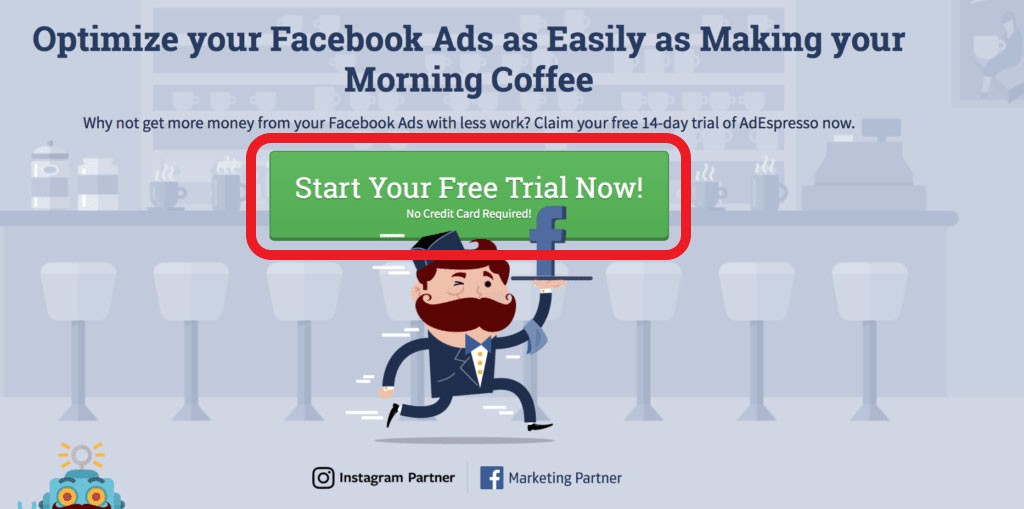
(Image Credit: AdEspresso)
Although CPM is a digital advertising model that has various advantages for the advertiser, it also has its downsides. It is great for promotion, especially if you want to control your budget, however, it is not that effective for measuring the results of the “action takers.”
We hope that you found this article useful.
If you want to know more interesting about your site health, get personal recommendations and alerts, scan your website by Diib. It only takes 60 seconds.
Pros and Cons of CPM for the Website or Mobile App Publisher
When it comes to the publisher of the website or mobile app, CPM offers different advantages and disadvantages in the effort to monetize their site through advertising. Let’s take a look at the pros and cons below.
PROS
- CPM is Profitable For High Traffic Sites Only:
CPM proves to be the best digital advertising model for publishers who want to monetize from publishing ads on their sites. That’s the case, of course, only if the site does indeed have high traffic on a consistent basis.
From the publisher’s point of view, when there’s plenty of traffic from multiple sources going through your site, then there’s a good chance for profitable monetization. That’s because the revenue you generate will come only from the ads being displayed, instead of a particular action the viewer has to take upon seeing the ad.
- Steady Stream of Income:
A major advantage of the CPM model is that it provides the publisher a permanent source of income without the need for creating ways to entice their visitors to engage with the ads to encourage clicks.
This makes CPM a very predictable source of revenue if you know how much traffic you continually get. You get paid only for continuing to draw your audience doing what you do, and you don’t have to worry one bit about how they react to the ads. It is a very relaxed way to use advertising models to monetize your site.
- Easily Measured:
The amount of views the displays or impressions receives is verifiable and can be easily and accurately measured, which prevents any fraudulent activity. There are some industry kinks being worked on such as Internet robots, but as far as the publisher is concerned, the number of views will be displayed, and they will be easily able to base their revenue on those numbers. It may not be advantageous for the advertiser paying for the ad, but it certainly is for the publisher. There are many tools available to help you track these metrics for example:
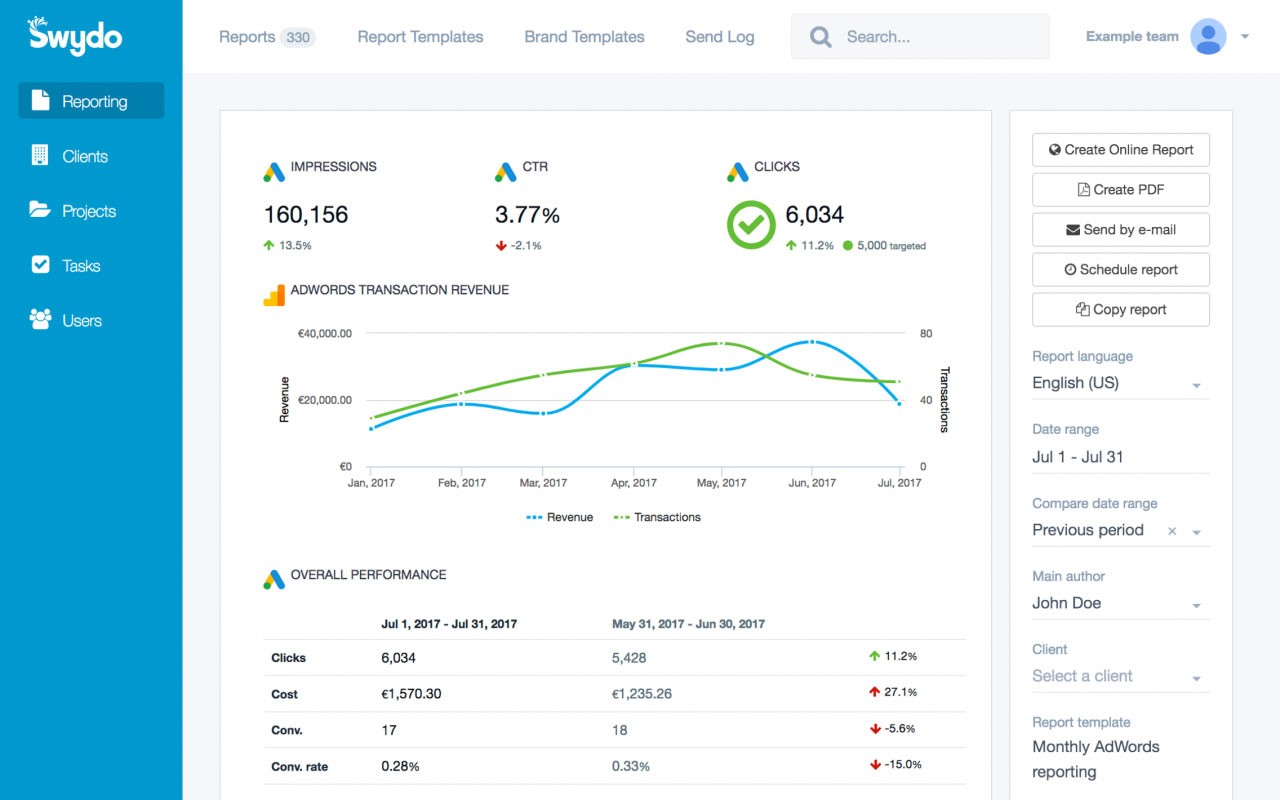
(Image Credit: Swydo)
- Serves as a Reliable Metric Tool:
As a publisher, since CPM is so easily measured, you enjoy CPM’s ability to depict the rate at which customers are being generated. It provides a consistent measuring tool for you to use as you’re projecting your site’s income from advertising.
CONS
- Low Revenue:
Compared to other advertising models publishers use to monetize such as CPA or CPC, this model has a lower anticipated revenue. However, it requires hardly any effort compared to other revenue generators.
- Only Works For High Traffic Sites:
Another disadvantage of using CPM is that it only generates significant revenue of websites or mobile apps that get tons of traffic through their site. The amount of traffic and the revenue are dependent on each other, which puts a lot of pressure on the publisher to maintain a certain amount of high traffic from month to month.
- High-Level Method:
The publisher needs a high level of skill and lots of time in order for this advertising program to be successful. Getting high traffic consistently on your site certainly takes lots of effort.
- Lower Revenue if Not Used Correctly:
If you use the CPM model on your site that is more likely to get more clicks and viewers, then you’ll generate less revenue as opposed to using other advertising models such as CTC. You have to know exactly what your website is capable of. Even if you don’t have high traffic, it is possible that the traffic you do get is more likely to click on the ads. You have to know which model is best for your specific abilities.
Summary
Despite some major advantages, online marketing CPM has some definite drawbacks. It is a great tool for advertisers to know how many views the ads are receiving on a particular website or mobile app. It works very well to promote the business name and create brand repetitive recognition and awareness at a fairly low cost.
Additionally, it is also a great tool for publishers to know how many views an ad gets because it will help them calculate how much in revenue to expect from all the advertisements they have on their site. Publishers don’t have to worry about how many ad viewers actually clicked on the ads and this will not affect their revenue.
On the other hand, the CPM marketing digital model is not favorable in some ways. Digital advertisers pay only for the ad that is being displayed. This creates uncertainty as to how much the quality of the traffic is that is seeing your ad. It does not give advertisers much confidence in terms of measuring the views of a quality audience.
Advertisers must be aware that banner displays alone cannot correlate in a direct way with the number of clicks, actions, or app installs. This leaves advertisers with the possibility of having fewer conversions for their advertising dollars. It is hard to measure, which makes it difficult to know the effectiveness.
As for website and mobile app publishers, using the CPM digital marketing model for generating revenue through advertising, only works if they meet one important condition – to have a huge amount of traffic.
Diib®: Access Your CPM Marketing Stats Today!
As an advertiser and a publisher, you can use CPM to promote your business projects and earn revenue from your high traffic site. The important thing is to know your exact needs and what you can offer so that you choose the ideal digital marketing advertising model. Partnering with Diib Digital can offer you a unique perspective into the health of your CPM Digital Marketing campaign. Here are some of the features of our User Dashboard you’re sure to appreciate:
- Keyword, backlink, and indexing monitoring and tracking tools
- Google Core Algorithm monitoring
- CPM monitoring and tracking
- Alerts to broken pages where you have backlinks (404 checker)
- Alerts and Objective that guide you to strengthen your website
Click here for your free 60 second site analysis and industry ranking or call 800-303-3510 to speak with one of our Growth Experts.
FAQ’s
CPM stands for cost per thousand impressions and is used to measure how many thousands of people your advertising has left an impression on. This is for ads that have the potential to be seen by tens of thousands of people.
Assume, for example, every visitor to your site through the ad spends $10 and earns you a profit of $2. If two visitors per 1000 take that action, you make $4 profit per 1000 impressions. In this case, any price under $4 is a good CPM for you.
The higher your base CPM, the better your chances that your ad will appear.
Divide the cost by the number of impressions divided by 1000. So the CPM formula is CPM = 1000 * cost / impressions.
The default pricing option that Facebook sets for your ad is a “cost per click” (CPC) bid, which is usually a good option when you’re just starting out.
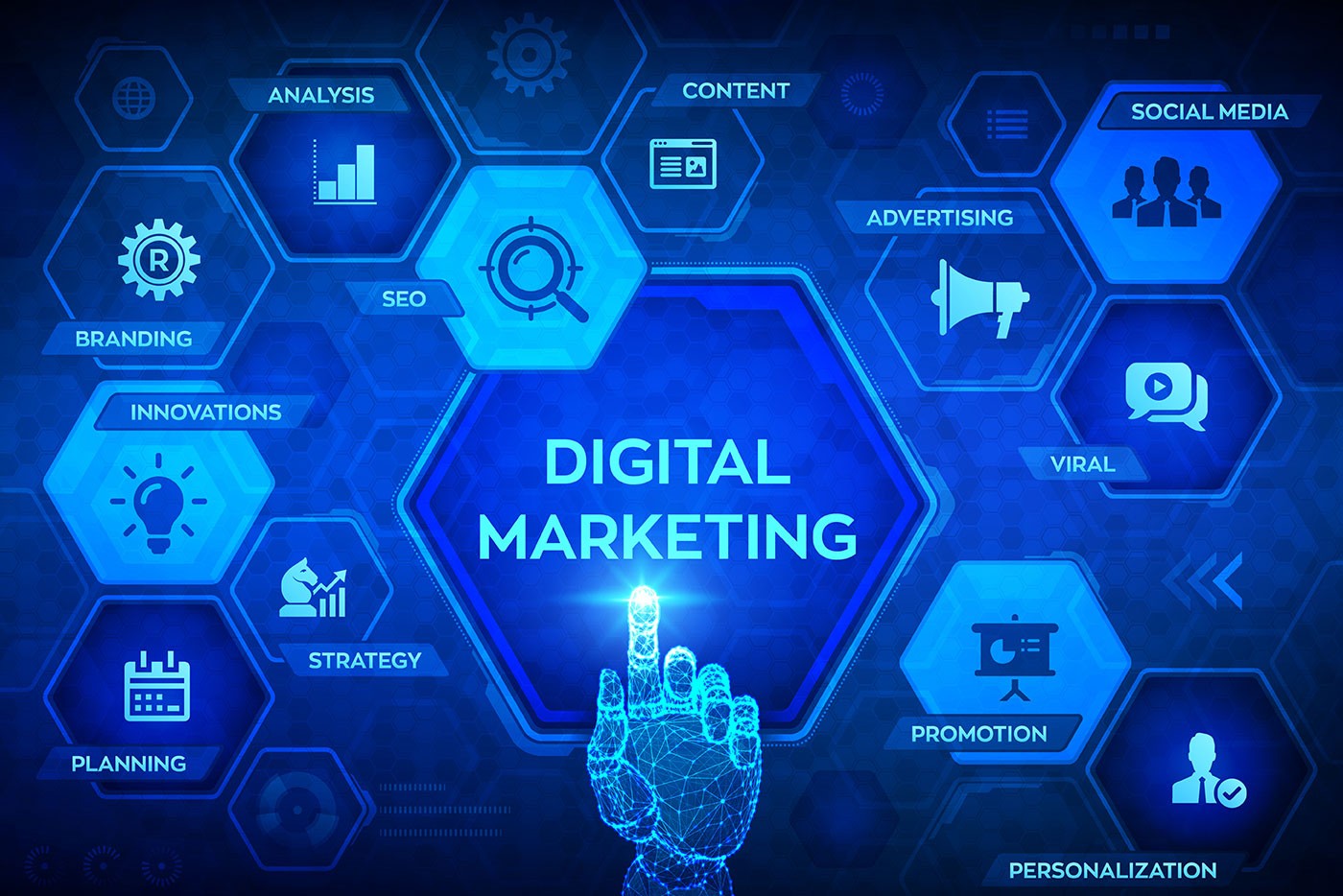



Ramesh says:
Thank you so much for continuing to provide us with such valuable information.
Are you looking for a part-time job? Then shake hands with the iplayboy.in.
Seeking Women says:
Thanks for sharing such an good Content with us. I really read your information you will mention on blog it’s provided us with helpful information for me .